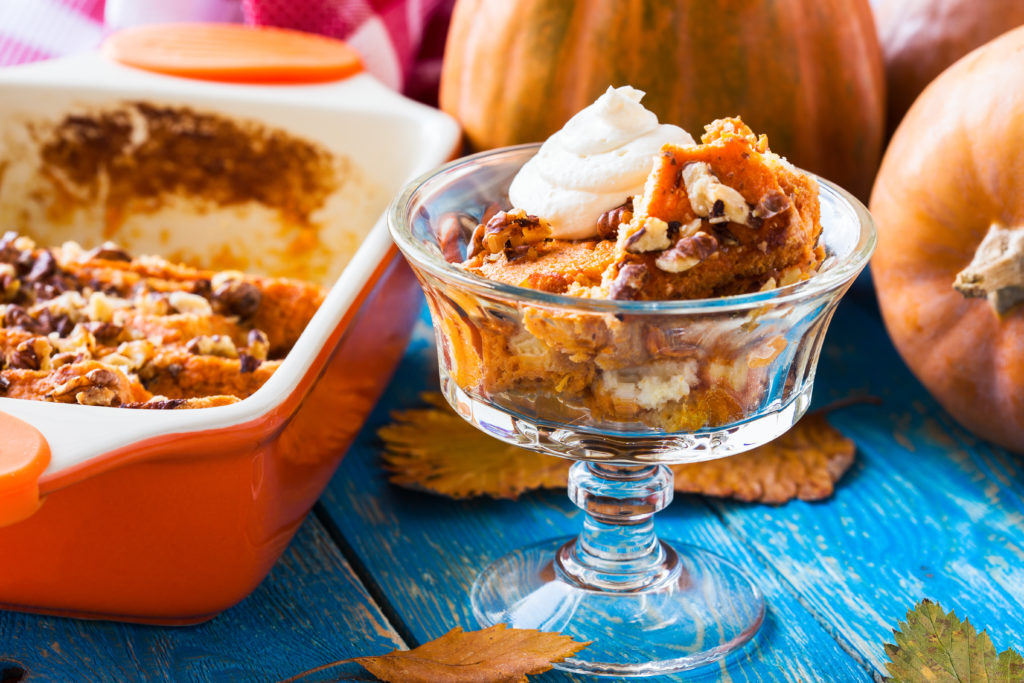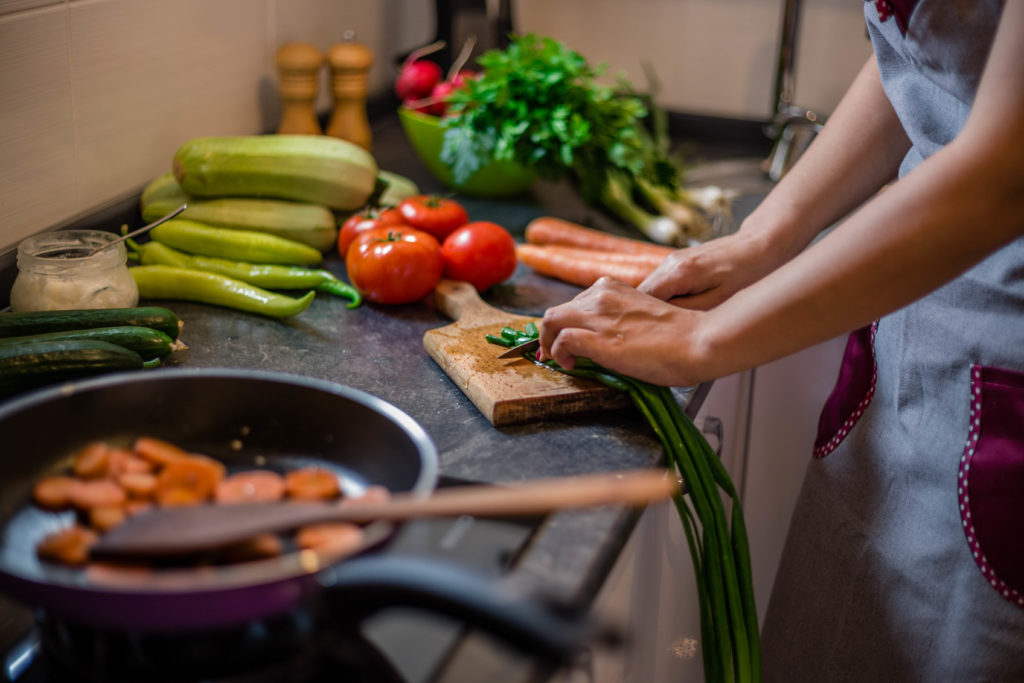In recent months I’ve had the privilege of spending three to four hours every Tuesday morning with a very bright, helpful lady. It seems that at times providence is just plain serendipitous!
This was certainly the case one Sunday after church when a member of our small parish politely asked if she might come visit me once a week. Her kids are grown and, except for one son still in school, she had some extra time on her hands. That said, she’d been thinking to ask me if she might come and help out with little chores or just visit.
When people know that you live alone or don’t have nearby relatives, as is my case, there seems to be a perception that we’re lonely and need company! But, after a few racing thoughts (since her offer honestly took me by surprise), I chalked it up to the fact that she simply wanted to do a little charitable work and help out someone twenty-plus years her major. Yes, getting older does at times have its perks!
To my great surprise, this has turned out to be one of the most mutually beneficial relationships I’ve had. Some things are just meant to be, and this has been transformational for both of us—so much so that I simply had to write about it. I want to share one of the more useful lessons to come out of my new adventure, which I call “Helpful Tuesdays with a Friend.”
So, what’s been the outcome of these helpful Tuesdays? Believe it or not, it has nothing to do with loneliness, since I’m quite used to living alone and rarely experience loneliness. For me, these Tuesdays have been about organizing my very messy office, sorting piles of books and magazines, and putting all of my closets in order. Hooray for me! But perhaps even more importantly, for her it’s been about learning how to cook nutritious foods. Who woulda’ thunk it!
Yep, knowing how to cook nutritious, whole foods is something I’ve taken for granted. But as you’ll read below, learning how to cook with whole foods turns out to be more complicated than I’d ever imagined. This is especially true if your only cooking experience has been with the “Standard American Diet” (SAD). Allow me to tell you what I mean.
How One Simple, Nutritious Food Became the Impetus for Change
The first morning my helper came, I made one of my favorite breakfasts, albeit not the usual fare of eggs and bacon. I baked a nice butternut squash, scraped out the meat, mashed it up nicely, and separated it into two fancy bowls. I then added good amount of raw butter and organic Ceylon cinnamon, then dribbled a tablespoon of raw honey over the top of each serving. To that I added at least a half a cup of good organic whipped cream and a generous sprinkling of finely chopped crispy almonds to both servings. (Learn how to make crispy almonds on my DVD Cook Your Way to Wellness.)
My visitor was stunned by this easy-to-make dish. She was mostly surprised that I’d even thought to combine such ordinary ingredients into a delicious and beautiful dish with such wonderful mouth feel—and, of course, with all sorts of nutritional value.
In that moment she was hooked. With all the food questions that followed, our Tuesday mornings started with learning about and preparing nutritious foods as we shared a fun breakfast. She was vaguely aware of my healthy diet, but she didn’t really know the extent of my food knowledge or about my past nutritional practice. Afterwards, with full and happy tummies, we’d begin the organizing and cleaning projects. It seems that someone out in the universe had beneficial plans for both of us.
Do We All Cook Like Our Moms?
My friend, like so many of us, is a product of her own upbringing. The love and care she shows her family is exemplary, and it shows in their good manners and the good lives they lead. Nevertheless, as I contemplate these last few months of helpful Tuesdays, I’ve come to believe that what we prepare and eat is very much generational.
In many respects, we do what our parents did. And some of our moms never got the opportunity to learn about the profound difference between the SAD diet and a diet of fresh organic foods and whole grains—let alone the chance to learn what foods go together and how to prepare nutritious meals on a budget. That being the case, I thought to address the issue, and I hope this article may bless you or someone you love with this essential skill regardless of how you were reared.
SAD Foods vs. Whole Organic Foods
Allow me to quote from an article titled “The Standard American Diet and Its Relationship to the Health Status of Americans” from PubMed.gov:
“The Standard American Diet (SAD) has long been implicated in contributing to the health challenges experienced in the United States. Significant changes to the SAD have occurred since the 1950s, including a greater abundance and accessibility to calorie-dense and nutrient-poor food and beverage choices. The disparity of present consumption patterns to diet and nutrition recommendations from the Dietary Guidelines for Americans are addressed.”
When we take a good look at SAD foods, we see that first and foremost they are created for the sake of convenience rather than nutritional value. Following is a quick overview of four common SAD foods.
- SAD foods are refined and highly processed. They include highly addictive and excessively sugared snacks and energy beverages, potato chips and other snacks fried in vegetable oils, desserts made with white flour and sugar, and dangerous sugar alternatives. Main meals may consist of ready-to-make prepackaged foods with ingredients like MSG and others chemicals and additives that are hard to say, let alone understand how they effect the human body. Sometimes we’ll include a prewashed salad or some type of frozen vegetable to an otherwise denatured meal and consider it the same as a serving of fresh vegetables. But I call them inflammatory foods. At best, when you leave the dinner table after a SAD meal, you leave with nothing but empty calories.
- SAD foods include commercially raised meats. These are from animals that have been pumped with antibiotics and hormones and raised on feed derived primarily from GMO soy and grain. Remember, when you eat meat, you eat what the animals eat! And, no, I don’t think a vegetarian diet is the answer.
- Many SAD foods are made with highly processed liquid vegetable oils from soy, corn, safflower, cottonseed, and canola. In his article “Good Fats, Bad Fats,” Chris Masterjohn explains that these refined oils promote cancer, while animal fats such as lard, tallow, butter, and chicken fat actually promote heart health. Additionally, the very high heat these oils are subjected to during processing can lead to serious cardiovascular diseases.
- SAD breads and other cereal products are made from processed grains, which means that all of the bran—and much of the nutritional value—is removed. Processed grains are therefore extremely low in fiber, and consuming them can lead to serious nutritional deficiencies and gastrointestinal problems. I speak to the nutritional value of organic whole grain in my blog post “Ancient Grain Primer.”
Whole Organic Foods
This may come as a surprise to many of you, but I’ve found that many people aren’t quite sure what foods they should be eating when they begin the transition to a whole foods diet. One of my favorites is liver, which is one of the most nutrient dense foods according to the Weston A. Price Foundation. I talk at length about why eating liver at least twice a week is a must in my blog post “The Yuck Factor: I Will Not Eat Organ Meats.” (You’ll also find some great recipes.)
For a detailed list of the absolute most prized superfoods advocated by Sally Fallon, visit my website.
Bottom line: After several months of helpful Tuesdays, my helper is now transitioning from SAD foods to whole foods, and not only do I have a much more organized and clean home office, but my closets are also perfecto. Win-win! (Smile)
How to Successfully Transition from SAD to Whole Foods
Possibly the most difficult part of helping my friend transition to fresh, organic whole foods, grass-fed beef, pastured chicken and eggs, and other nutrient dense foods was just the slow process of getting started. The look on her face the first time I showed her a package of chicken feet to make broth was totally priceless! (Smile)
As she watched me every Tuesday morning come up with easy, tasty, and nutritious dishes, I realized that a difference between cooking one of my meals vs. making a prepackaged SAD meal was that I get most of my meal ideas from recipes, at least initially. Cooking with nutrient dense foods means using an array of unprocessed ingredients, so a road map is very useful. This is where the rubber meets the road, and we must decide if we want to develop the skills that will help us easily prepare meals from scratch and stop using prepackaged refined foods. I think recipes are therefore a key part of the transition process. Every Tuesday we created recipes that my friend could revise for her family at home.
Realizing that it would be too difficult to transition all at one time, I came up with an easy plan. Following are the steps I suggested, but I’m certain that it will serve for anyone who wants to make this change.
Don’t be too anxious or in too much of a hurry to change your diet. Old habits are hard to break and getting discouraged will only lead you to abandon your good intentions. Like the old saying goes, “Easy does it, but do it!”
To make a successful transition, you should come to grips that this is a learning process. Learning new skills can be trying and even cumbersome. Making it fun and adventuresome is easy if you peer into the future and see yourself a year out. Imagine how much happier and healthier you and your family will be.
Here are the essential assignments:
#1. Read first, cook later: I can think of no better way to learn what foods are best to incorporate into your diet than to first read about them in a book. I strongly discourage online articles because the internet can lead you to thousands of opinions on the same food and make you wonder what to believe!
While I’m on the subject of books, let me caution that while used books that you purchase online may save you a few bucks, you may receive old, out-of-date editions that don’t have recipe corrections or other important information that you’d find in a newer edition. Buy your books from a reputable source (see links below) to ensure you’re getting the latest edition.
In my experience it works best to learn from books written by authors you respect. When I stopped being a vegetarian, my food hero became Sally Fallon. Most of her recommendations are based on the work of Weston A. Price, the author of Nutrition and Physical Degeneration. I was therefore easily convinced that I’d chosen a nutritious diet that includes all of the food groups and is backed by a strong website with science based references.
With Sally Fallon’s detailed food recommendations and over 700 recipes, Nourishing Traditions has introduced thousands to the traditional diet advocated by WAPF. Fallon’s Nourishing Broth is another title I encourage to start with. These are both wonderful, information-packed books that will give you a solid foundation on which to build your new healthy lifestyle.
#2. Become part of the movement: You and your family’s transition will be even more beneficial if you join the movement and work in tandem with others to change some of our current food laws, many of which are anti-organic, and surround yourself with people who will encourage you and add to your knowledge.
One way to receive many great books recommendations, recipes, and healthy tips is by subscribing to the Selene River Press newsletter. You can also join Weston A. Price chapter meetings that are held throughout the United States and in some foreign countries as well. A benefit of these meetings is the array of wonderful, nutrient dense dishes that people bring.
Okay, my dear readers, I think I’ve said all there is to say about my latest adventure. I hope this has inspired you to find your way to the most fascinating endeavors anyone can possibly have—good health!
[xyz-ihs snippet=”Begin-Authors-Note”]Afterthoughts from the Traditional Cook
Delicious
We all enjoy delicious food,
Makes us happy, fixes our mood.
It’s all about the juicy taste,
Doesn’t matter, where the food is placed.
We should consider, nutritional support,
We shall need it, if we engage in a sport.
Energy; food provides—plenty
Need a bit more, if we’re over twenty.
A great dish, we should all savor,
Eat slowly, as we taste the flavor.
Choose our very favorite cuisine,
Is it red? Or is it green?
—from AnitaPoems.com
Note from Maria: I am a Certified Natural Health Professional, CNHP, not a medical doctor. I do not diagnose, prescribe for, treat, or claim to prevent, mitigate, or cure any human diseases. Please see your medical doctor prior to following any recommendations I make in my blogs or on my website.
Images from iStock/LightFieldStudios (main image), istetiana (pumpkin bread), chabybucko (chopping food), gustavofrazao (sign).



